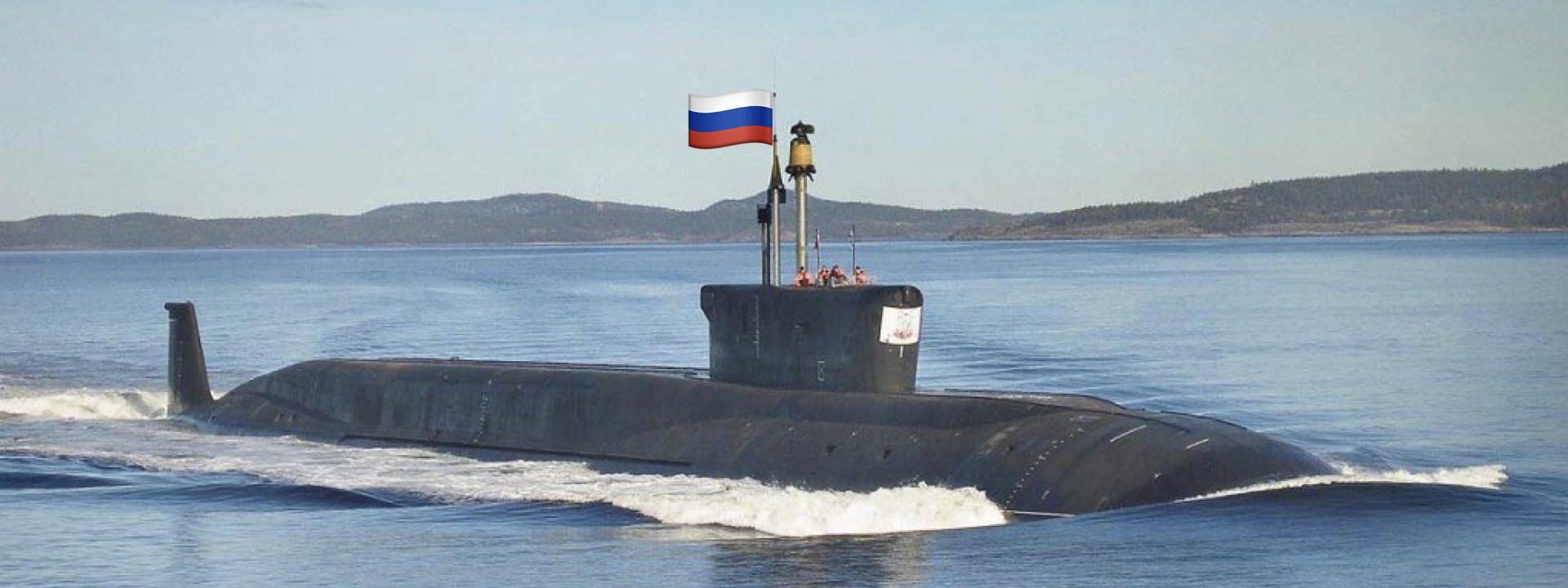#MeanwhileInTheArctic: Prince Vladimir Submarine Sets Sail
A brief look into Russia’s nuclear submarine upgrade project
#MeanwhileInTheArctic: Prince Vladimir Submarine Sets Sail

A brief look into Russia’s nuclear submarine upgrade project

On November 17, the submarine Knyaz Vladimir / Prince Vladimir (Князь Владимир) set sail for the first time. The submarine is the first of five upgraded Borei-A class submarines currently under construction. @DFRLab took a deeper look into the newly developed submarine and overall Russian naval-based strategic deterrence trends.
The Russian MoD (Ministry of Defense) posted about the ceremony to launch the ship on November 15 on their official website. On November 17, a video also surfaced on YouTube from the actual ceremony and provided a glimpse into the shipyard where the submarines are built.
The Russian MoD post and subsequent video title suggest that the submarine is built by the SEVMASH company. The poster at the background of the event confirmed. The state-run plant SEVMASH is one of the largest, well-equipped shipbuilding complexes in Russia, located in the city of Severodvinsk. The plant specializes in building and repairing submarines.

The location of the ceremony appeared to be the main shipyard of the SEVMASH in Severodvinsk. This is the same shipyard complex protected by recently upgraded S-400 SAM (Surface-to-Air Missile) @DFRLab previously reported on.


Russia aims to use the five new Borei-A class and three existing Borei class submarines as the basis of its maritime strategic deterrent. According to the Russian MoD, four other hauls are already being used to build the remaining Borei-A class submarines: the Knyaz Oleg, Generalissimus Suvorov, Imperator Alexander III, and Knyaz Pozharsky. Construction on these nuclear submarines is expected to be completed by 2025.
According to the Commander-in-Chief of the Russian Navy Admiral Vladimir Korolev, this upgrade is a crucial step in developing Russian Naval Strategic Nuclear Forces. He said:
This will be a vital practical step in equipping the Russian Strategic Nuclear Forces with the new generation of nuclear submarines.
The main difference between its predecessor (Borei class) submarines is that the Borei-A class is fitted with 20 missile tubes instead of 16. The submarine is armed with the newest intercontinental ballistic missiles (ICBMs) — RSM-56 Bulava (NATO call sign: SS-NX-32). Each of these ICBMs is capable of carrying six independently targetable warheads.

Nuclear-powered ballistic missile submarines traditionally played a smaller role in Russia’s strategic deterrence compared to the United States, but current developments indicate a change in this paradigm. @DFRLab recently reported on a Russian ICBM exercise, where out of four ICBMs launched, two were launched from submarines.
Russian submarines are also being used in the Syrian conflict; currently to fire 3M14T (NATO call sign: SS-N-30A) Kalibr missiles. Russia renewed its agreement with Syria regarding the Tartus naval base in 2016, which means Russia will be able to base nuclear submarines in a highly trafficked thoroughfare in the Mediterranean Sea. The previous agreement for the Tartus naval base only accommodated mid-size ships.
The ceremonial ship launching of the new Borei-A class submarine suggests a shift in Russian nuclear deterrence paradigm. The exact deployment location of Knyaz Vladimir, or the three currently existing Borei class submarines, is unknown. @DFRLab will continue to monitor Russian ICBM related military developments and exercises.
Follow along for more in-depth analysis from our #DigitalSherlocks.

